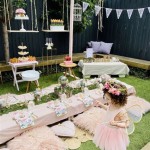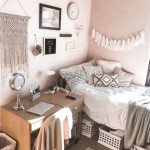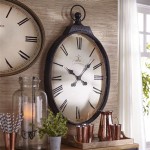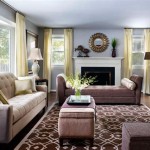Art Home Decor Ideas: Enhancing Your Living Space
Art integration into home decor elevates a living space from functional to expressive. It provides a unique opportunity to reflect personal tastes, interests, and experiences. Selecting and arranging art effectively involves understanding basic principles of design, considering the architectural context, and thoughtfully balancing aesthetics with practicality.
The term "art" in this context encompasses a broad range of creative outputs, including paintings, sculptures, photography, prints, and even handcrafted objects. The key lies in choosing pieces that resonate with the homeowner and contribute to the desired atmosphere of the room.
Choosing Art that Complements Your Style
Identifying a personal style is crucial before selecting artwork. Contemporary, minimalist, traditional, eclectic, and Bohemian are just a few examples of stylistic categories. Each style carries distinct characteristics that should inform the selection process. For instance, a minimalist approach typically favors abstract art with clean lines and a muted color palette, whereas a traditional setting might be more suited to landscape paintings or portraiture with richer, more saturated hues.
The size and scale of artwork relative to the space are also important considerations. A large, statement piece can dominate a small room, making it feel cramped, while a small artwork might get lost in a large, open space. Carefully measuring the available wall space and considering the dimensions of the furniture surrounding it will ensure that the artwork fits proportionally and aesthetically.
Color plays a significant role in the visual impact of artwork. Coordinating the colors in the artwork with the existing color scheme of the room can create a cohesive and harmonious atmosphere. Alternatively, a strategically chosen piece with contrasting colors can serve as a focal point and add visual interest. Understanding color theory, including the use of complementary and analogous colors, can greatly assist in making informed decisions about color selection.
Beyond paintings and prints, consider exploring other art forms such as sculptures, ceramics, and textiles. Sculptures can add depth and three-dimensionality to a room, while ceramics can bring a touch of rustic charm. Textiles, such as woven tapestries or embroidered panels, can add texture and warmth to a space. Mixing different art forms can create a more dynamic and visually stimulating environment.
Placement and Arrangement of Artwork
The placement of artwork is just as important as the selection itself. The goal is to create a visually balanced and engaging composition that draws the eye and enhances the overall aesthetic of the room. Several factors should be considered, including the height of the artwork, the lighting, and the surrounding furniture.
A common rule of thumb is to hang artwork so that the center of the piece is at eye level, typically around 57 to 60 inches from the floor. This ensures that the artwork is easily viewable and prevents it from feeling too high or too low. However, this rule can be adjusted depending on the size of the artwork and the height of the viewer.
Consider the lighting when placing artwork. Natural light can enhance the colors and textures of a piece, but direct sunlight can also damage certain types of artwork, particularly paintings and prints. Artificial lighting, such as spotlights or picture lights, can be used to highlight specific features of the artwork and create a more dramatic effect. It's important to choose lighting that does not cause glare or cast harsh shadows.
Arranging multiple pieces of artwork together requires careful planning. A gallery wall, for example, can be a striking way to display a collection of artwork. When creating a gallery wall, it's important to consider the size, shape, and color of each piece and arrange them in a visually balanced and cohesive manner. A common approach is to start with a central piece and then build around it, using smaller pieces to fill in the gaps. Ensure consistent spacing between the frames to maintain a sense of unity.
Another approach is to create a vignette by grouping artwork with other decorative objects, such as vases, sculptures, or books. This can add depth and interest to a space and create a more personalized and layered look. When creating a vignette, it's important to consider the scale and proportion of each object and arrange them in a visually pleasing and balanced composition.
Integrating Art with Functionality
Art should not only be aesthetically pleasing but also functional and practical. Consider how artwork can be integrated into the everyday use of the space. For instance, a large mirror can serve as a decorative element while also reflecting light and making the room feel larger. A decorative screen can provide privacy or divide a room while also adding visual interest. A sculptural lamp can serve as both a light source and a work of art.
Consider the location of the artwork in relation to the furniture and other elements in the room. For example, artwork placed above a sofa should be proportionally sized to the sofa and hung at a height that allows for comfortable viewing. Artwork placed in a hallway should be spaced appropriately to allow for easy passage. In a dining room, artwork can be hung above the buffet or on an adjacent wall to create a focal point.
Protecting the artwork is also an important consideration. Artwork should be hung away from sources of heat and humidity, such as radiators and bathrooms. Direct sunlight can fade or damage certain types of artwork, so it's important to protect them with UV-resistant glass or acrylic. Regular cleaning and maintenance can also help to preserve the artwork for years to come.
Think about the overall flow and functionality of the room when selecting and arranging artwork. Artwork should enhance the space without obstructing pathways or interfering with the use of the furniture. Choose pieces that complement the existing décor and contribute to the overall atmosphere of the room. Art should be an integral part of the design, creating a harmonious and inviting space.
Beyond traditionally framed art, consider alternative display methods. Unframed canvases can create a modern, minimalist look. Sculptures can be placed on pedestals, shelves, or even directly on the floor. Tapestries and textiles can be hung on walls or draped over furniture. The key is to experiment and find creative ways to showcase art that reflect personal style and complement the design of the room.
Ultimately, the best art home decor ideas are those that reflect the homeowner's unique personality and create a space that is both beautiful and functional. By carefully considering the principles of design, the architectural context, and the practical considerations of the space, it is possible to create a home that is both visually stunning and personally meaningful.
Remember that the art selection and placement process is not static. It's acceptable, and often encouraged, to rearrange pieces periodically, introduce new additions, and adapt the display to reflect evolving tastes and trends. The home should be a living canvas, constantly being refined and personalized.
Consider also incorporating DIY art projects into the home decor. This can range from creating simple framed prints to more ambitious endeavors such as painting a mural or sculpting a piece of furniture. DIY projects not only add a personal touch to the home but also provide a creative outlet for the homeowner.
Incorporate elements of nature through botanical prints, pressed flower arrangements, or even mounted insect displays. These natural elements can add a touch of serenity and organic beauty to the home decor, complementing the other artwork and creating a more balanced and harmonious environment.
Finally, remember that the most important aspect of art home decor is to create a space that is comfortable, inviting, and reflective of the homeowner's unique personality. Choose pieces that resonate with personal tastes and interests, arrange them in a way that feels natural and balanced, and don't be afraid to experiment and have fun with the process.

50 Modern Wall Art Ideas For A Moment Of Creativity Decoist

Change The Feel Of Your Room With These Large Wall Art Ideas Big Décor

15 Wall Decor Ideas For Living Room Decorpot

58 Best Wall Art Ideas For Every Room Cool Decor And Prints

34 Diy Wall Art Ideas Homemade Painting Projects

How To Incorporate Art Into Your Living Decor Santa Barbara Design Center

12 Easy Home Decor Ideas On A Budget Wall Art Prints

Change The Feel Of Your Room With These Large Wall Art Ideas Big Décor

9 Easy Diy Wall Art Ideas

Change The Feel Of Your Room With These Large Wall Art Ideas Big Décor
Related Posts







